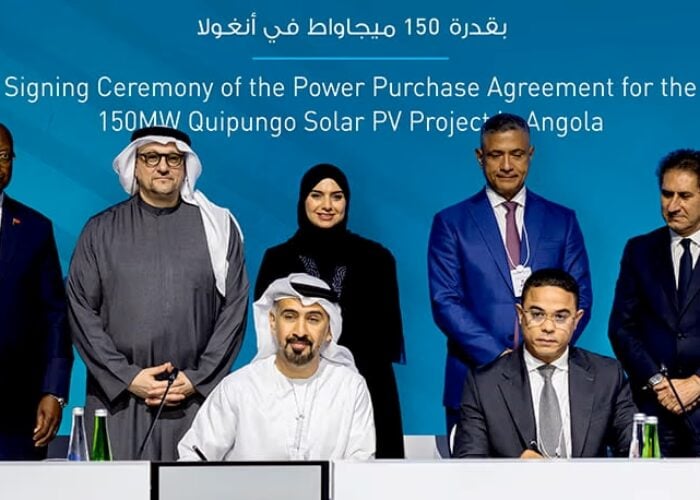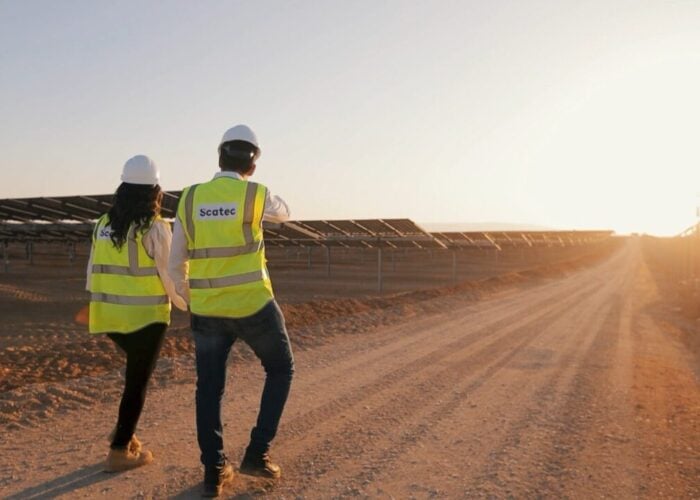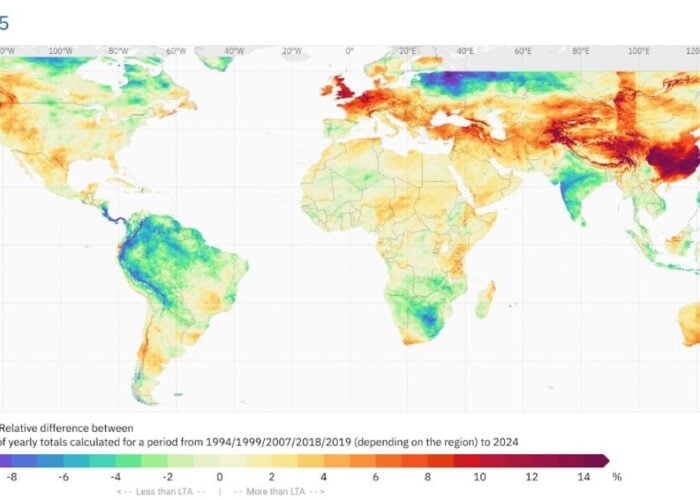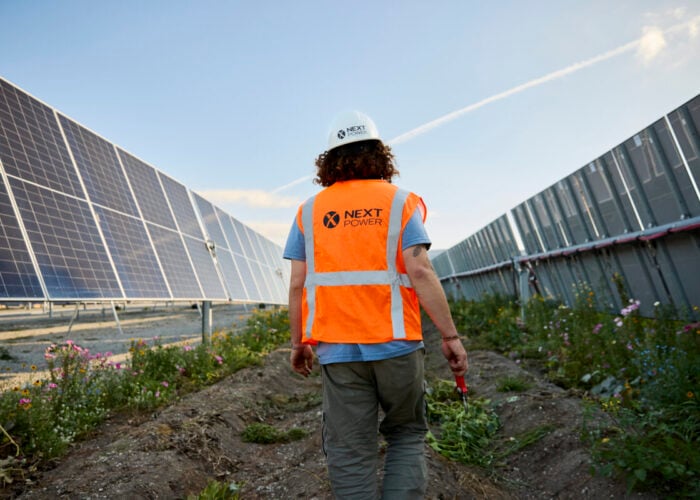The Intergovernmental Panel on Climate Change (IPCC) has said solar has the largest technical feasibility in mitigating harmful emissions from electricity production “by a large magnitude”.
The final draft of the IPCC’s fifth report, Working Group III ‘Climate Change 2014: Mitigation of Climate Change’ was published in full on Tuesday.
Try Premium for just $1
- Full premium access for the first month at only $1
- Converts to an annual rate after 30 days unless cancelled
- Cancel anytime during the trial period
Premium Benefits
- Expert industry analysis and interviews
- Digital access to PV Tech Power journal
- Exclusive event discounts
Or get the full Premium subscription right away
Or continue reading this article for free
The draft report stated that renewables “hold great promise”, but there are still concerns such as intermittency, (subsidised) finance and economic competitiveness, water use and land availability.
However, because of infrastructure restraints – especially in developing countries – solar power home systems are “often favoured” as a renewable energy option, with more than 300 net zero energy buildings, often utilising on-site solar generation, built globally already, the IPCC report says.
On-site solar generation was also noted as an efficient energy source for some transport such as large ships.
For dramatically reducing greenhouse gases to the scale required to avert catastrophic climate change, the report advocated solar energy as part of a “portfolio of options, because no single option is sufficient”.
The IPCC recommendation also states that renewable energy has the potential to more than meet global energy demand, as renewables are now the third largest contributor to global energy supply – just behind coal and gas – with a good chance of being the second largest contributor by 2020. Since 2005 solar has increased deployment by a factor of 25, the report states.
The 15 chapters, covering thousands of contributions from scientific literature on transport, to buildings, agriculture and global energy use, is to advise world leaders on policy to mitigate catastrophic effects of anthropogenic climate change.
The report also highlighted the need for energy storage, as current “short term storage resources can be used to compensate the day/night cycle of solar”, this could also allow for surplus renewable energy to be reused for other energy needs, the report says.
Emissions
“Electricity production is the largest single sector emitting fossil fuel carbon dioxide at present,” according to the report.
Limiting warming to 2 degrees Celsius, or an atmospheric concentration of carbon dioxide of 450 parts per million (levels are currently around 400ppm), can be achieved by “a tripling to nearly a quadrupling of the share of zero and low carbon energy supply from renewables”, with more “rapid improvements of energy efficiency”, by 2050, the report summary states.
“At present, emissions are not on track for stabilisation let alone deep cuts,” the report states.
The report warned of continued delay: “If the world’s countries cannot take on sufficiently ambitious mitigation over the next 20 years, or obstacles impede the deployment of important mitigation technologies at large scale, goals such as 450ppm carbon dioxide, by 2100 may no longer be possible.”
Keeping to the estimated “safe” level of 450ppm of carbon dioxide, “by the end of the 21st century, are both physically and technologically possible” but low carbon technology, including solar, “might need to increase five-fold or more over the next 40 years” the report says.
US secretary of state John Kerry has said in response to the report that current low carbon energy technology must be used to prevent catastrophic climate change.
Kerry said the report “makes very clear we face an issue of global willpower, not capacity”, and said the IPCC report “shines a light on energy technologies available right now” to fight climate change.
South Australia’s minister for sustainability, environment and conservation Ian Hunter said: “More than 27% of our electricity generation now comes from over AUS$3 billion worth of privately funded wind farms with an additional 4% from solar panels. South Australia understands the importance of reducing emissions, but we also need to be proactive in adapting to the changes that have already occurred.”
Finance
The report summary predicts investment in electricity supplying fossil fuels is to decline by US$30 billion by 2029, with investment in renewables and other low carbon technologies set to rise to US$147 billion.
However new finance “mechanisms that allow households to lease solar panels rather than pay the full cost up front can play a role in addressing such [energy demand and climate] issues, as can public schemes to fund initial deployment of new technologies” the report says.
Mark Kenber, CEO of The Climate Group, said on the report: “Top solar stocks averaged 302% over the past year, for example. A ‘clean revolution’ is good news for consumers too – solar energy currently costs the same as electricity generated by coal and gas in many countries such as Germany, Italy and Mexico, with the cost trajectory on an ongoing downward path.”
Out of US$244 billion investment in renewables in 2012 (excluding hydro), solar accounted for US$140 billion.
However renewables investment is still trailing behind investment in new and replacement fossil fuel plants at US$262 billion – but overtook net investment in fossil fuels at US$148 billion.
“Additional investments required in the energy supply sector by 2050 are estimated to be US$190 billion to US$900 billion a year to limit the temperature increase below 2°C” the report estimates.
Employment
“For the same amount of power generated, solar PV requires as many as 18 and seven times more jobs than nuclear and wind,” the report states. Using conservative estimates the report says that “renewable sources of power generation could account for about 155,000 direct and 115,000 indirect jobs” in the Middle East, alone, by 2050.
The report also cites the examples of Germany and Spain as “noteworthy where 500 to 600 thousand people could be employed in the renewable energy supply sector in each country by 2030”.
Overall to gain the benefits from solar energy and avert climate change, “additional enabling policies are needed to address issues associated with the integration of [renewable energy] into future energy systems” the report concludes.






